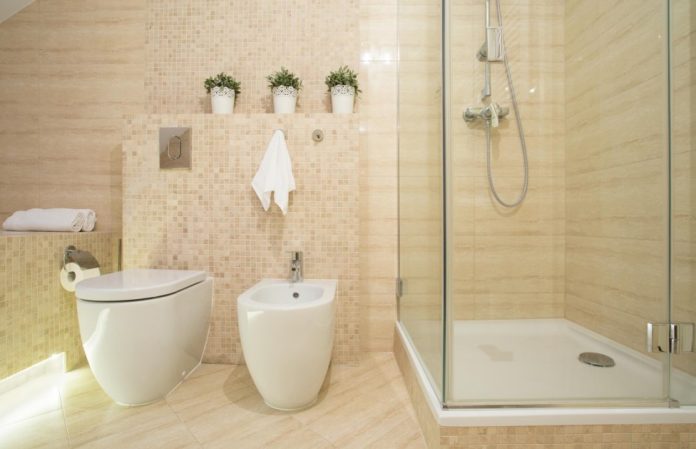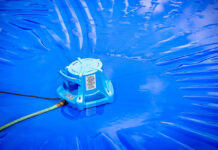Even though you use your toilet every day, you probably don’t have any idea what type of set out you have or how much it might cost to replace. It’s only when a toilet needs replacing that you start to ask these questions and realise the humble toilet is complex enough to warrant drawing up a renovation plan, or at least a wish list, to get the right purchase for your home.
According to fluidplumbingservices.com.au, knowing what features you want from your next toilet as well as what is available from the different types on the market will help you make an informed choice.
The typical toilet suite
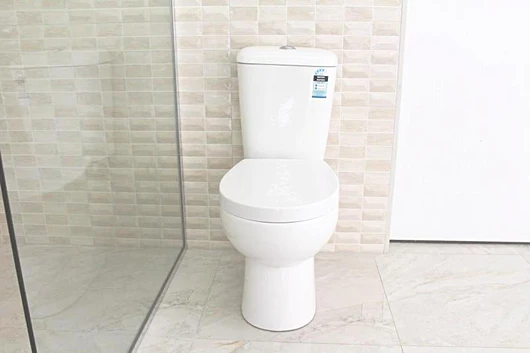
Looking around a bathroom store or browsing online, you’ll see plenty of different toilet styles, but they are all typically made up of the same parts:
- The cistern – the upper part that looks after the flush functionality and reserves water
- The toilet pan – the lower part that makes up your seat, bowl and waste exit pipe
Pushing the flush button activates a flow of water driven by gravity from the cistern to the pan to remove waste. There are slightly different ways this removal set out can happen.
1. Know your Set Out: The S trap, P trap and skew trap
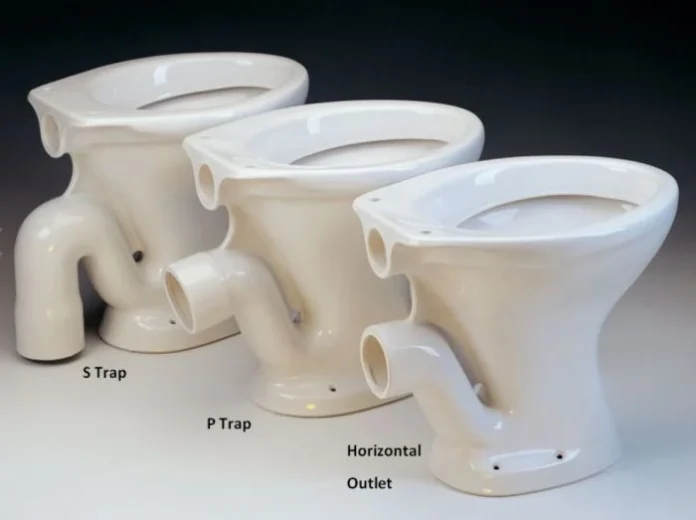
There are typically three ways the exit pipes can be set out which is determined by the shape of the pipe inside the base of the toilet bowl:
- Through the floor – using an S Trap bend
- Through the back wall – using a P Trap bend
- Around either side of the pan – using a Skew Trap
By far the most popular toilet type in Australian bathrooms is the S Trap. Most Aussie toilets rest above the sewage pipelines in the floor. If your toilet is wall-mounted, with clearance underneath the bowl, you’ll be looking at the P Trap set out.
While not as common in Australian bathrooms, the compact Skew Trap is a better option if you are working in a particularly cramped space.
While you can always change set outs, the biggest tip here is to replace an existing toilet with whatever toilet set out is already in place. This will keep your installation simple and reduce costs.
2. Choose your Water Inlet position
Once you have your set out verified you will need to determine what water inlet you prefer.
The water inlet is the positioning of a flexible copper pipe that directs water into the cistern after a flush.
There are two choices here, luckily most new cisterns have both types available, so it’s simply a matter of selecting your preference at installation.
Back inlet – located at the back of the system against the wall, this is a great option if you want your plumbing hidden. It’s neater and cleaner, although the installation is more complex and will require the assistance of a qualified plumber.
Bottom inlet – located under the cistern. The plumbing is exposed and simply runs to a tap of some sort. This is a very straightforward and simple installation you can do yourself.
If your chosen cistern doesn’t come with both options you can ask a plumber to make some changes to easily achieve both water inlet options.
3. Select Your Toilet Design
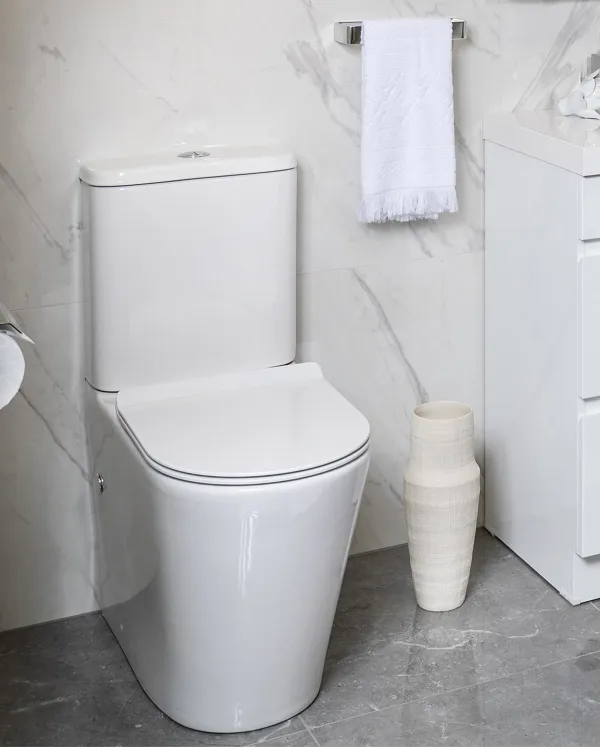
Toilets don’t have to be boring or chunky. New designs allow you to select sleek and luxurious-looking cisterns and bowls and create a bathroom that has real style. Browsing around will give you an idea of how much choice you have, but it’s important you keep the set out in mind, as well as your budget.
Link, or connector toilets
This is the standard toilet look where the cistern is wall-mounted and joined to the bowl by a long, vertical pipe. It is possible to have the linking pipe concealed to give it a bit more of a modern feel. If you are looking at the cheapest toilets the link toilet is your go-to. Still popular across Australia they are easy to install and fit just about every bathroom.
Close-coupled toilets
A more modern look is a toilet cistern that sits at the back of the toilet bowl, closing the gap and reducing the need for a pipe. These ones do protrude more into a space so check your measurements carefully so you don’t block doors or cupboards.
Back to wall toilets
Toilets that sit flush to the wall are smooth and stylish as well as being easier to clean as the curve of the set out is enclosed, however, toilet prices do start to climb with this design.
Concealed cistern toilets
Hiding the cistern completely behind a panel is the cleanest and most modern look. You’ll have noticed these at airports and shopping centres, all you have is a seamless bowl and flush buttons. A plumber will build the cistern into a panel that can be accessed for maintenance. You can select where you want your flush buttons to be for a customised bathroom feel.
4. Toilet seat options
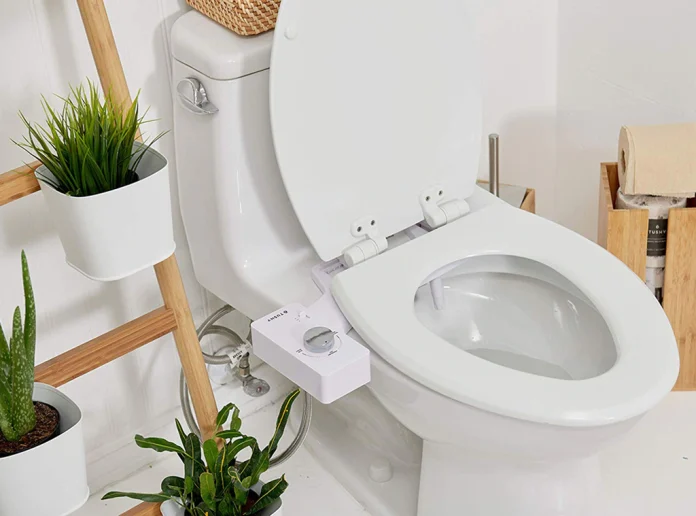
When it comes to modern toilet seats there is a growing market for soft-closing lids. These self-closing lids give you a more hands-free approach to lowering the toilet lid as well as reducing the impact and noise from lids slamming shut.
Also available are quick-release toilet lids. Rather than the normal fastened hinge style that requires tools to remove, these are easy snap lids that enable you to remove the lid completely for easy cleaning.
5. Bidets and smart toilets
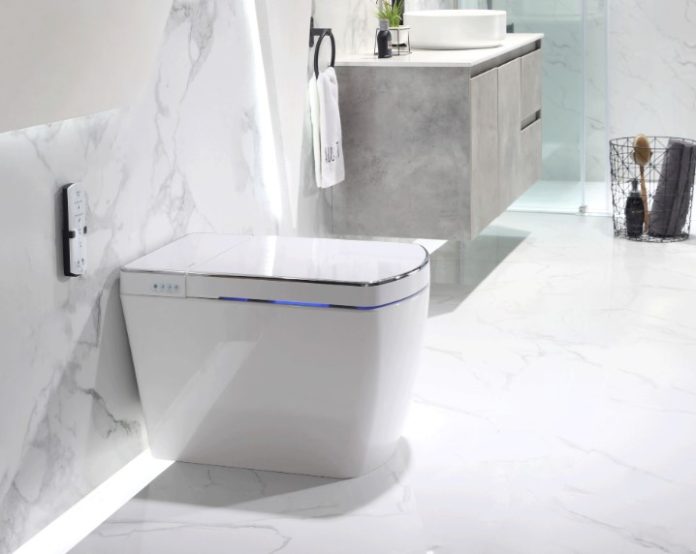
If you are looking to add a bidet to your toilet you have a number of options. There are the free-standing bidets, used in Europe and America, as well as add-on budgets that can be placed inside your toilet seat.
Simple versions do not require much plumbing work and can usually be one yourself but consult a plumber immediately if you run into any issues to get the problem sorted quickly, before it gets out of hand.
You can take your bidet to luxury levels with a smart toilet. These allow you to choose the water pressure, alter the temperature of the bidet water and even jazz up your system with lights and heated seats.
Doing a little groundwork before you buy and having a plumber assist with planning and installing your toilet will help prevent stumbling on big problems later on. It’s a small way to keep your bathroom makeover on time, within budget and to the highest possible quality.
